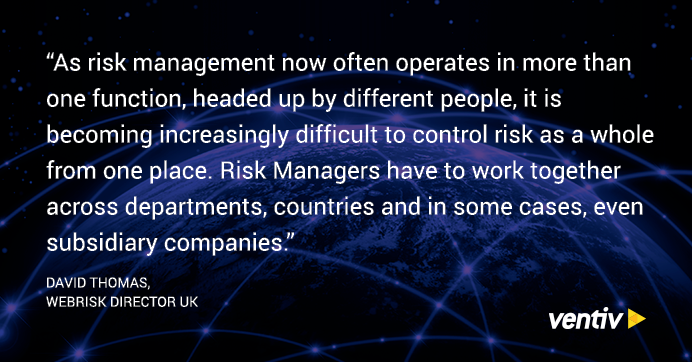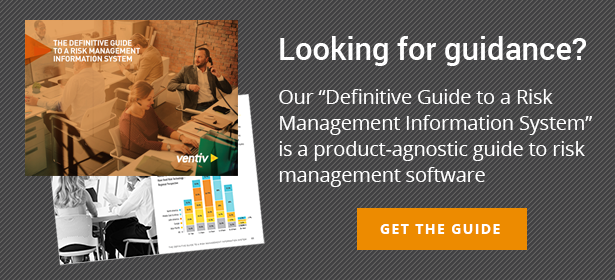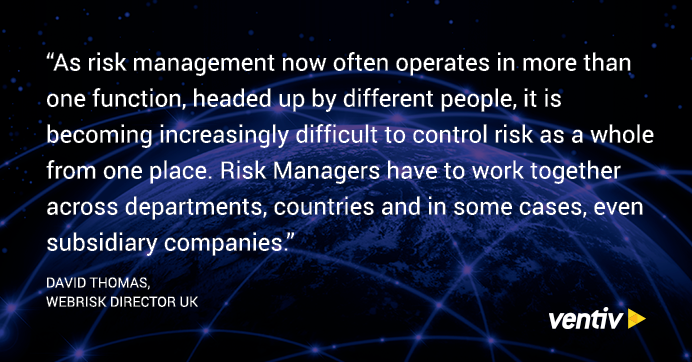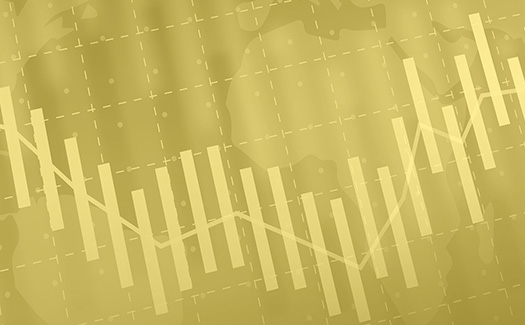
In today’s global economy, where many small and large organizations work across many countries, risk management has become far more complex.
As risk management now often operates in more than one function, headed up by different people, it is becoming increasingly difficult to control risk as a whole from one place. Risk Managers have to work together across departments, countries and in some cases, even subsidiary companies.
Risk management and the role of the Risk Manager is changing. There are a variety of drivers for this change, but the biggest influencers are:
- Compliance, including the new GDPR
- Reputation, including expectations of customers and social media making it easier for them to communicate their views publicly
- Changes in external risks such as Brexit, cyber crime and terrorism
- Formalization of risk management functions, making it a bigger strategic focus
- Advancements in risk technology, such as risk management information systems (RMIS), analytics to make use of big data and data intake tools like Ventiv’s Capture.
With so many evolving factors in risk management, how this will affect Risk Managers is still unclear. However, one thing for sure is the increasing importance of this role within organizations.
How is risk management changing?
As external threats are changing, managing risks such as cyber crime requires inter-departmental collaboration between risk management, IT and the Board (not to mention business-wide support to implement protective measures).
The global and collaborative nature of successful risk management means that a Risk Manager now needs to promote better communication and transparency in sharing risk processes. They also need more in-depth knowledge of all potential and emerging risks. This could be from a combination of external research, industry monitoring and membership organizations with internal data and reports.
For smaller companies, ignoring formal risk frameworks, risk registers and processes is no longer an option. Business continuity is vital to every organization and we are now seeing more dedicated risk management roles being created to shape this.
As risk technology becomes more and more powerful, companies need a dedicated RMIS with robust analytics for risk analysis. Risk Managers now have an opportunity to influence strategic business decisions based on accurate data. Analyzing data to create usable, meaningful reports, enables Risk Managers to support business strategy in a way they could not before.
The benefits of these changes
Aon’s risk maturity index suggests that companies with more focus on risk management have lower premiums for Directors & Officers (D&O) insurance. It’s that confidence by insurers that companies taking risk management seriously are considered safer, shows how important it is in today’s world.
Apart from insurance premiums, other cost savings come from using risk technology to streamline processes so Risk Managers can focus on high priority areas.
The companies with higher risk maturity are also often more competitive. This is because they know what data they have, they know their business strategy is based on this data and the whole business understands their role in managing risk.
 David Thomas
David Thomas
Webrisk Director
t +44 (0) 20 7626 5166
e david.thomas@ventivtech.com










 David Thomas
David Thomas



